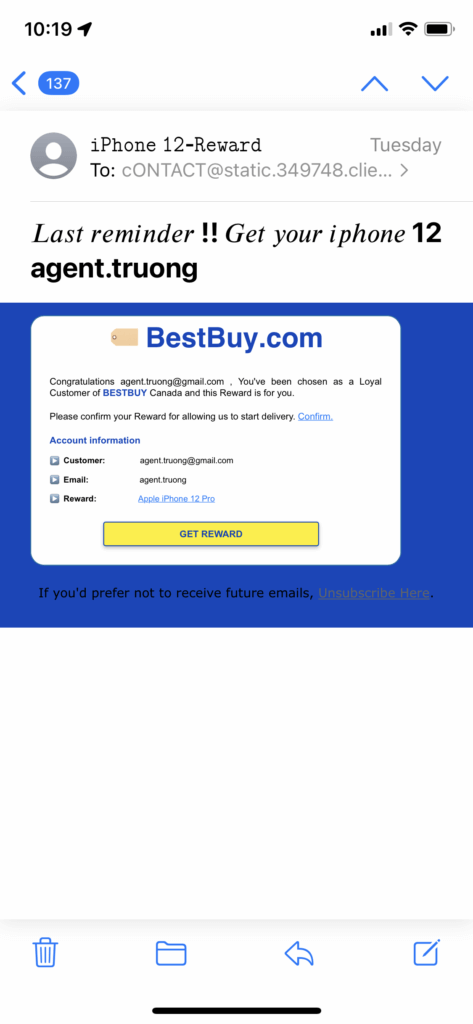Prevent Phishing Attacks
We have discussed what phishing attacks are, the different kinds of attacks that we may experience, and characteristics to look for. So now it is time to learn best practices when it comes to receiving phishing attacks.
Below are some best practices to keep yourself safe from phishing attacks. It is extremely important that you review these so that you do not fall victim to phishing attacks in the future.

Best Practices

Think before you click: if you ever receive an email, message or phone call that seems suspicious (they are asking for something that’s unusual such as additional payments, personal information you have already provided etc.) do not click on it!

Look for improper spelling or grammar: scammers tend to make these mistakes. Also see if they are referring to you by your name. Reputable sources will generally refer to you by your name.

Keep your browser up to date: Updates are important because updates provide fixes for any issues the browser was experiencing. It is important to keep your browser up-to-date for your own safety and security.

NEVER give out personal information: this is the most important way to prevent a phishing attack. Never provide personal information through email, messages or over the phone to someone you do not know.
Great stuff! Those are all very important to staying safe online. Below are some examples of phishing scams. Take a look and try to spot parts of the email that would be a red flag. The answers will be posted for you to review as well!

Examples
Example 1: Below is an example of a phishing email. Take a look and try to spot red flags.

Below are the red flags that would indicate that this is a Deceptive phishing email. Below the image are explanations for each one.

- 1: Always check the email address that the message is being sent from. In this example, this is not a legitimate address from the company. You can do this by tapping on the email address. This will allow you to view the contact’s information.
- 2: Remember, if you are not addressed by your name, it is probably a phishing email.
- 3: If the offer seems too good to be true, it probably is!
Example 2: Below is a scenario that many of us may have experienced before. Read about Glenn’s experience with a phone scammer. Once you are done reading we will discuss what things to look out for if you ever receive a phone call from a scammer.
Scenario: Glenn is a 65 year old man who lives with his wife. One day while Glenn and his wife are watching television, they receive a phone call. Glenn picks up the phone and the person on the other end claims to be from the bank that he uses and he is told that he needs to provide his banking account information along with some personal information. Glenn is aware of banking scams that have been happening so he finds this suspicious.
What should Glenn do? Below are a couple different responses that will help Glenn handle phone scams.

Responses to Vishing Attacks
- Glenn can tell them that he will call them back.
- Glenn can just hang-up if he feels like this is a scam.
- Once Glenn hangs up, he can call his bank and confirm if this call was a scam.
